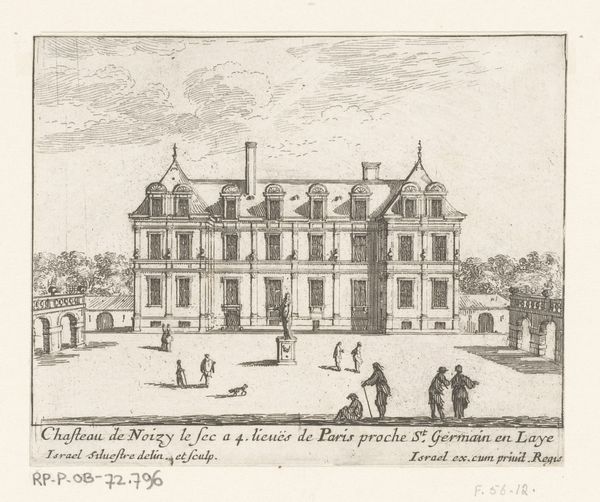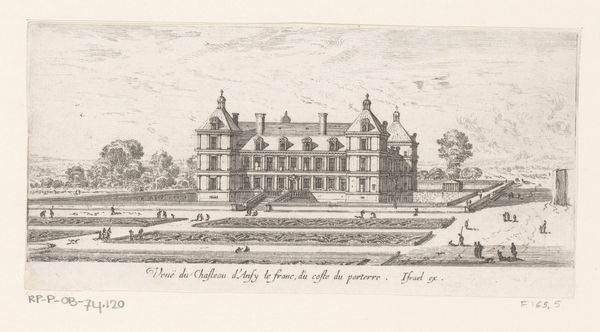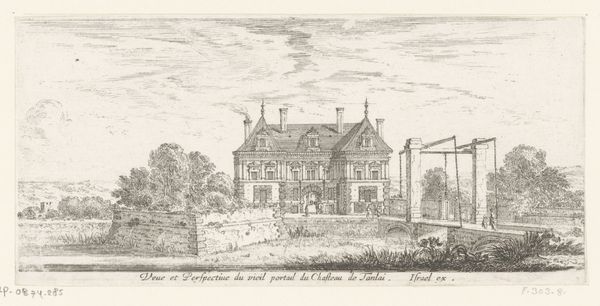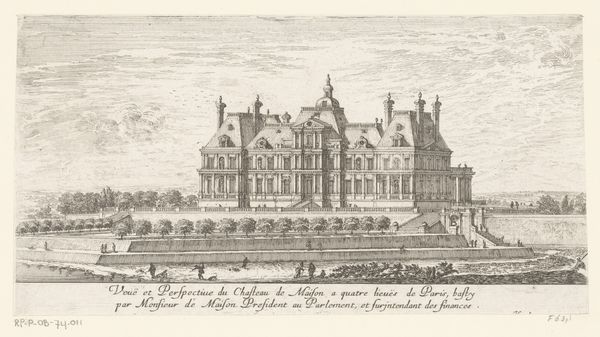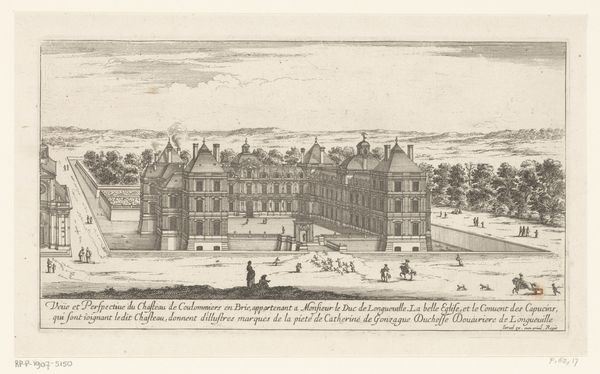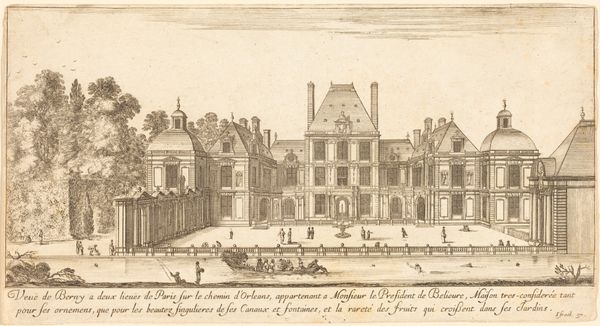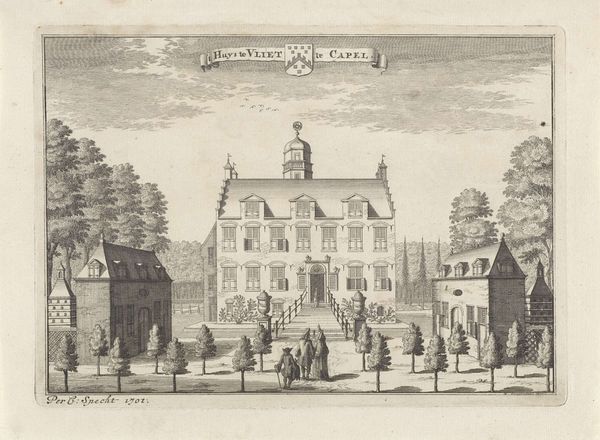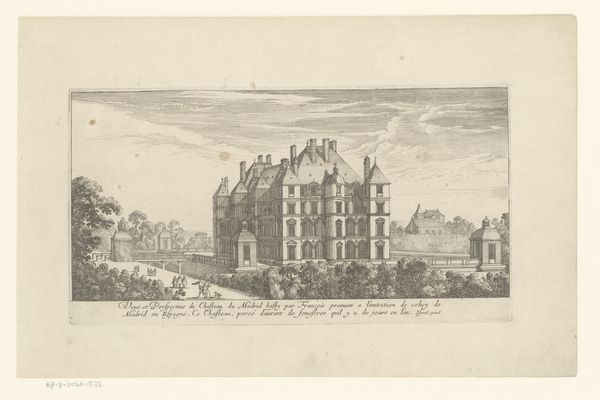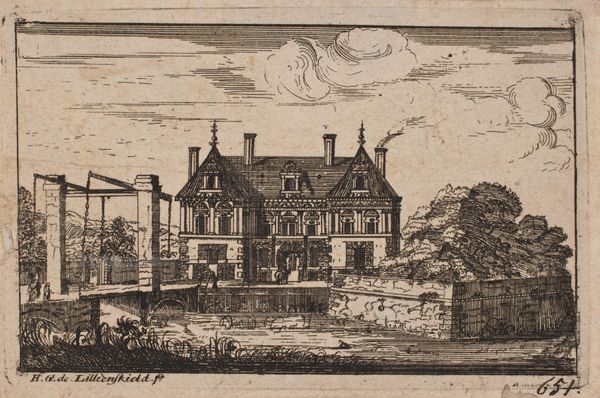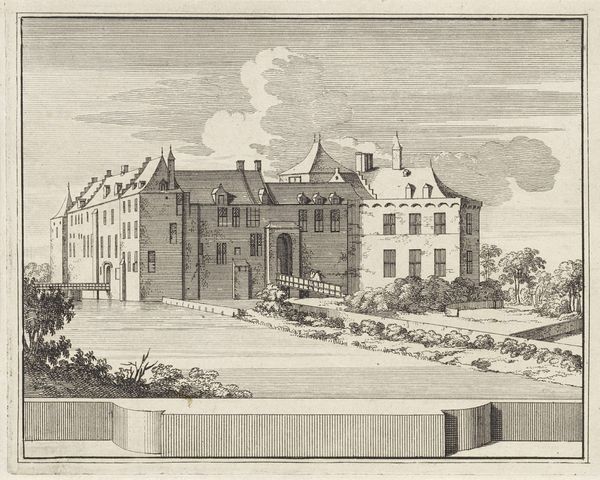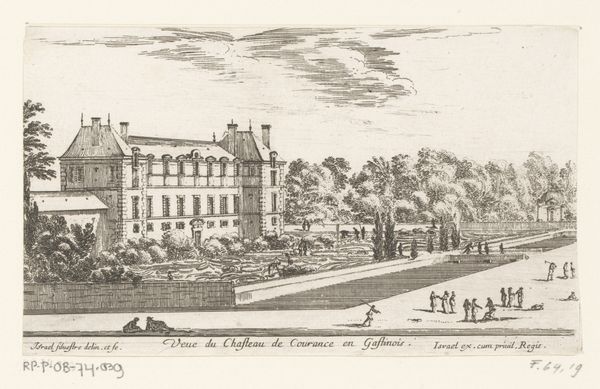
print, etching, engraving, architecture
#
aged paper
#
light pencil work
# print
#
pen sketch
#
etching
#
pencil sketch
#
old engraving style
#
sketch book
#
landscape
#
personal sketchbook
#
sketchwork
#
pen-ink sketch
#
pen work
#
cityscape
#
history-painting
#
engraving
#
architecture
Dimensions: height 120 mm, width 241 mm
Copyright: Rijks Museum: Open Domain
Curator: Gazing upon "Gezicht op het kasteel van Fresne," an etching by Israel Silvestre created sometime between 1631 and 1691, the overwhelming feeling is one of formal precision, wouldn't you say? The details seem incredibly exact. Editor: Absolutely, a meticulous portrayal. And what strikes me is how this kind of architectural rendering normalizes and almost celebrates the stark social hierarchy of the time. That castle isn't just a building; it’s a symbol of power. Curator: Indeed. Consider Silvestre's technique: the repetitive use of lines, the cross-hatching that defines texture... he’s carefully building an image, brick by brick, that not only represents the castle but also reflects the values invested in its construction. Look at the inscription. This wasn't just built for anyone, but by and for powerful elite. Editor: And we can't ignore the labor implicit in that "building," the backs broken in its making. Who were the architects, the masons, the often-unnamed laborers? This print monumentalizes the end product but erases so much of the lived experiences embedded in its very foundations. Curator: That is certainly part of it, though perhaps not explicitly within the intention of Silvestre himself. His meticulous process mirrors the meticulous construction and accumulation required to build, operate, and maintain the estate – linking labor to representation. It is now on display at the Rijksmuseum. Editor: Precisely! Silvestre probably wouldn't frame it that way. But looking back, we have a responsibility to fill in those gaps, to consider not just the aesthetic, but the political and economic implications ingrained in this "view" of a castle. Curator: I appreciate you mentioning those missing histories. Silvestre has preserved a location frozen in a moment. The architecture as physical embodiment of ambition and capital. It’s the details that offer clues, however muted. Editor: True. Seeing this print invites us to consider art not just as a product, but as a record—however partial or skewed—of the forces shaping our world. Curator: Yes, and thinking about it now makes me appreciate just how much work—mental and physical—went into producing images like this during this era. Editor: It’s in understanding that labor, both artistic and physical, that the real richness of a piece like this can truly be revealed.
Comments
No comments
Be the first to comment and join the conversation on the ultimate creative platform.
